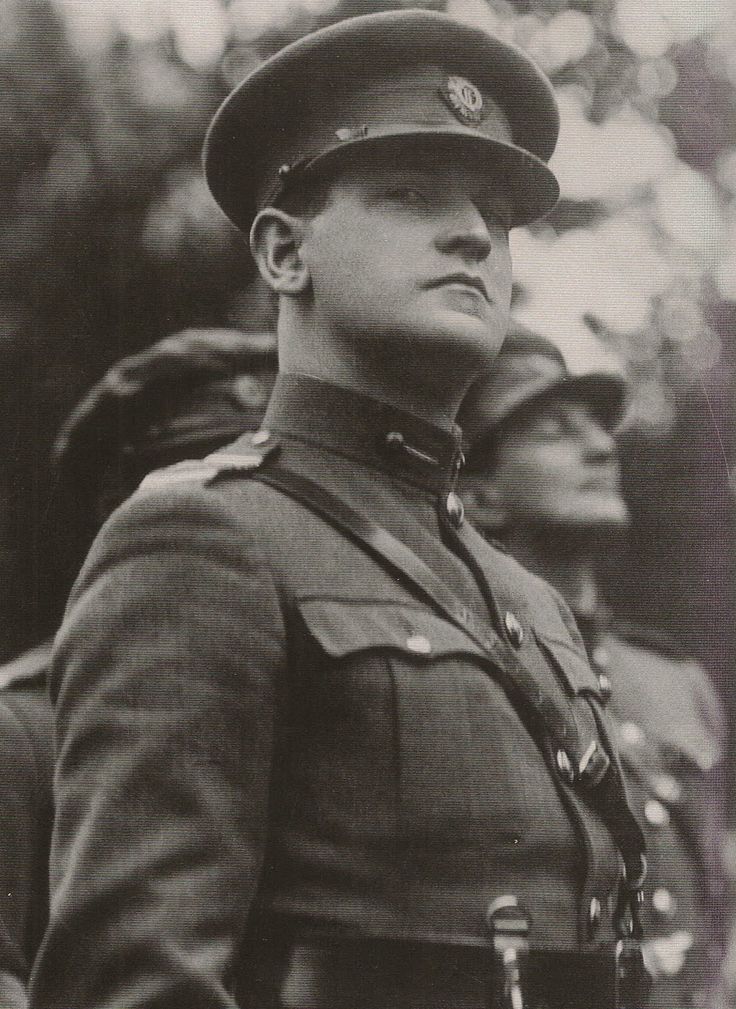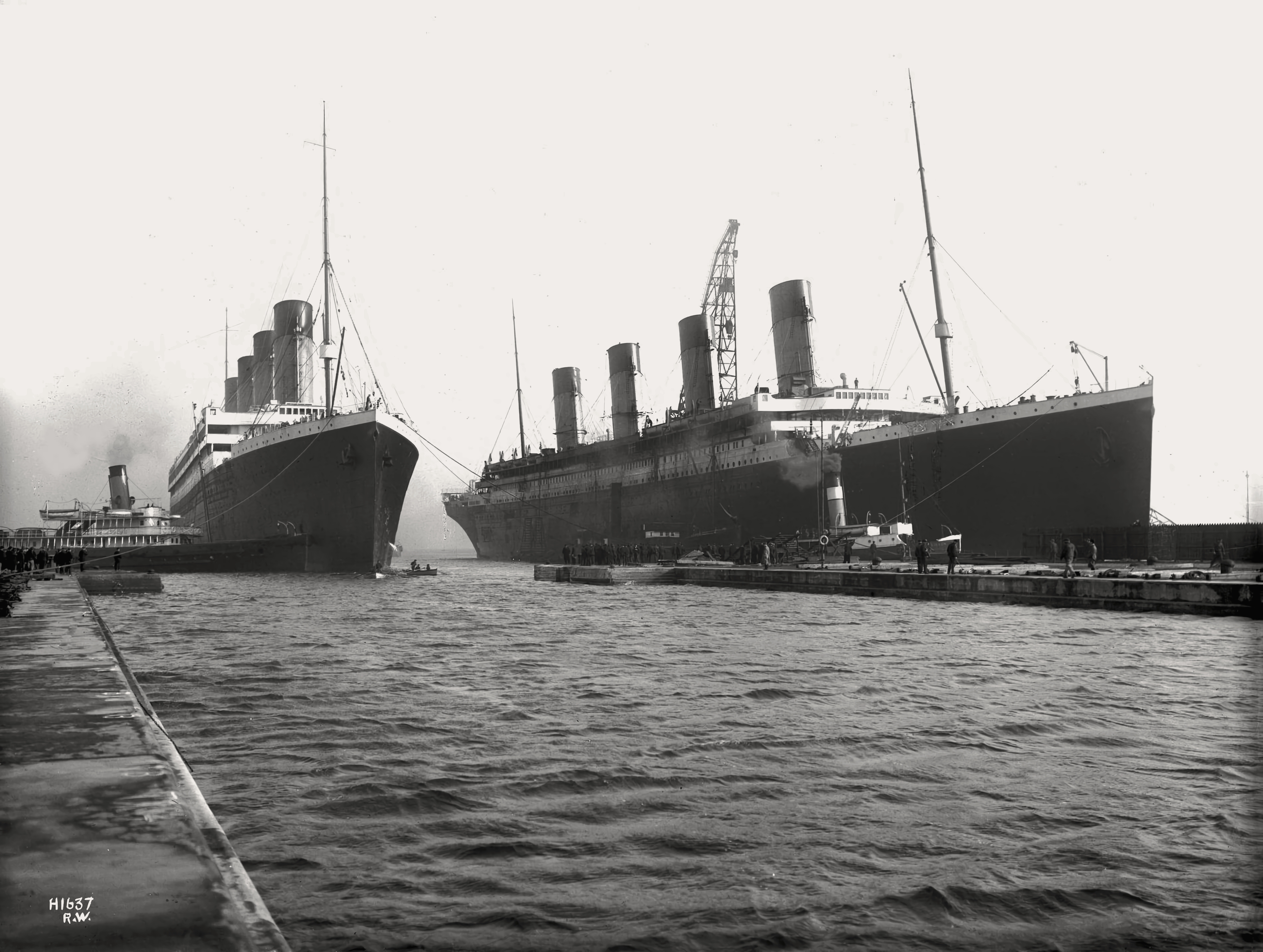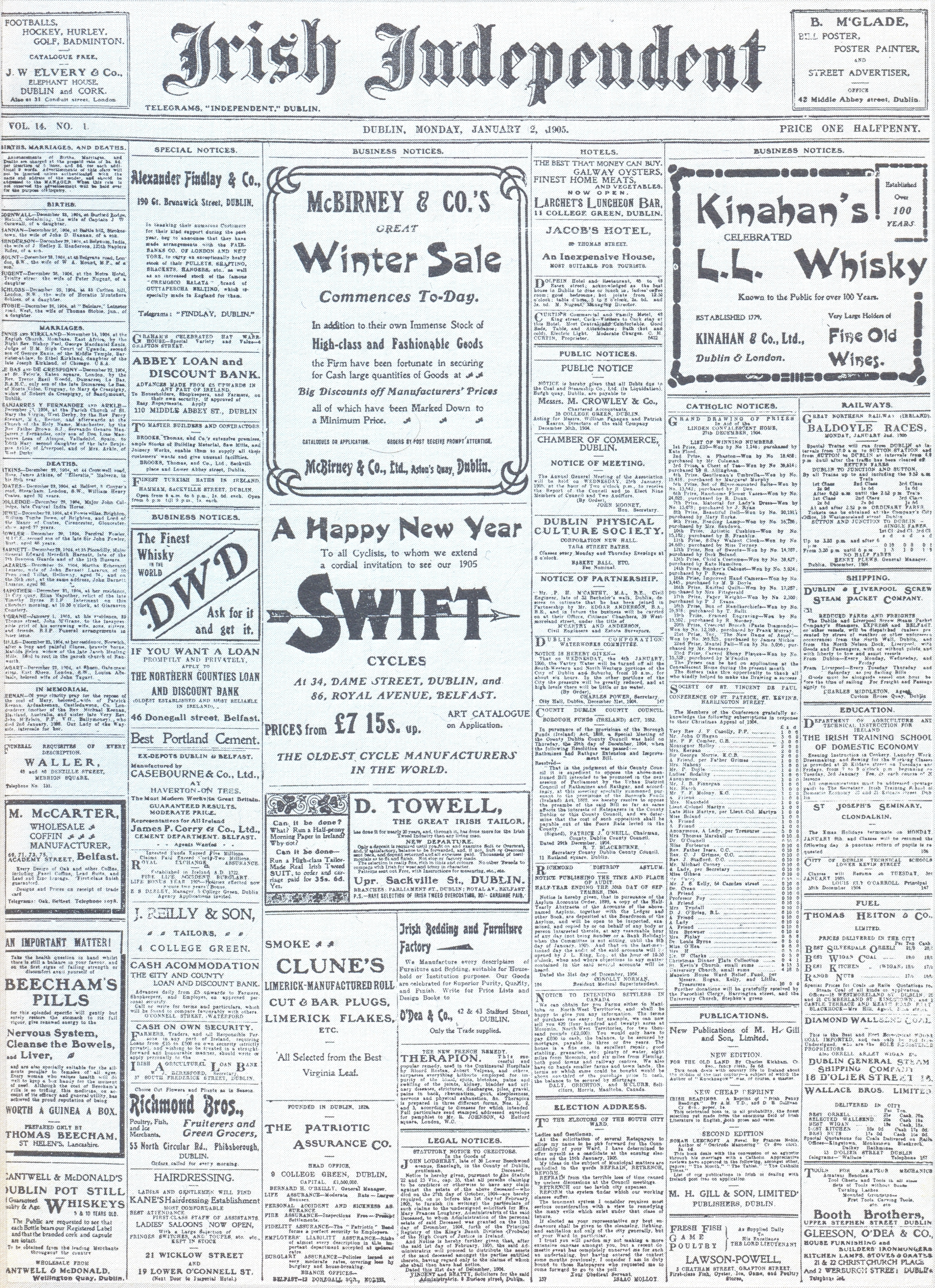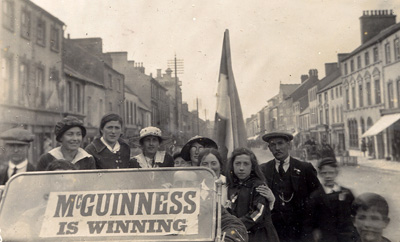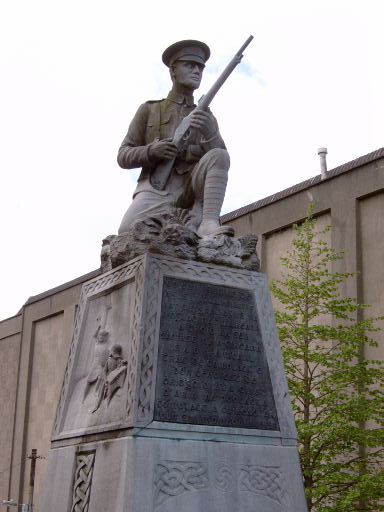|
Séamus Burke
Séamus Aloysius Burke (sometimes spelt ''Bourke'') (15 June 1893 – 10 June 1967) was an Irish barrister and politician who served as Minister of State at the Department of Finance from 1927 to 1932 and Minister for Local Government and Public Health from 1924 to 1927. He was a Teachta Dála (TD) from 1918 to 1938. Early life Burke was born on 15 June 1893 at Newgrove House, Rathnavogue near Roscrea, County Tipperary. He was the eldest son of Tobias Henry Burke, a farmer originally from Burlington, Borrisoleigh, and Bridget Agnes Quinlan, daughter of Patrick Quinlan of Cummer, Kilcommon. In 1905 the Burke family emigrated to the United States, settling in New York, where his father Tobias had inherited property. During his childhood, two of Burkers older brothers died of scarlatina. The Burkes returned to Ireland in 1908 and acquired Rockforest, also in County Tipperary. Burke became an American citizen during his time in New York and was educated at Fordham University in ... [...More Info...] [...Related Items...] OR: [Wikipedia] [Google] [Baidu] |
Minister Of State (Ireland)
A Minister of State () in Republic of Ireland, Ireland (also called a junior minister) is of non-cabinet rank attached to one or more Department of State (Ireland), Departments of State of the Government of Ireland and assists the Minister of the Government responsible for that department. The government may appoint up to 23 ministers of state. Appointment Unlike senior government ministers, which are appointed by the President of Ireland on the advice (constitutional), advice of the Taoiseach and the prior approval of Dáil Éireann, Ministers of State are appointed directly by the government, on the nomination of the Taoiseach. Members of either House of the Oireachtas (Dáil or Seanad) may be appointed to be a Minister of State; to date, the only senator appointed as Minister of State has been Pippa Hackett, who served from June 2020 to January 2025. Ministers of State continue in office after the dissolution of the Dáil until the appointment of a new Taoiseach. If the Taois ... [...More Info...] [...Related Items...] OR: [Wikipedia] [Google] [Baidu] |
Fine Gael
Fine Gael ( ; ; ) is a centre-right, liberal-conservative, Christian democratic political party in Ireland. Fine Gael is currently the third-largest party in the Republic of Ireland in terms of members of Dáil Éireann. The party had a membership of 25,000 in 2021. Simon Harris succeeded Leo Varadkar as party leader on 24 March 2024. Fine Gael was founded on 8 September 1933, following the merger of its parent party Cumann na nGaedheal, the National Centre Party and the Blueshirts. Its origins lie in the struggle for Irish independence and the pro-Treaty side in the Irish Civil War, with the party claiming the legacy of Michael Collins. In its early years, the party was commonly known as ''Fine Gael – The United Ireland Party'', abbreviated ''UIP'', and its official title in its constitution remains Fine Gael (United Ireland). Fine Gael holds a pro-European stance and is generally considered to be more of a proponent of economic liberalism than its traditional rival, ... [...More Info...] [...Related Items...] OR: [Wikipedia] [Google] [Baidu] |
Ian Macpherson, 1st Baron Strathcarron
James Ian Stewart Macpherson, 1st Baron Strathcarron, (14 May 1880 – 14 August 1937), known as Sir Ian Macpherson, 1st Baronet, between 1933 and 1936, was a Scottish lawyer and Liberal politician. In 1931 he joined the breakway Liberal National Party. Background and education Macpherson was the son of James Macpherson, JP, of Inverness, and Anne, daughter of James Stewart. Lord Drumalbyn, George Macpherson and Sir Tommy Macpherson were his nephews. He was educated at the University of Edinburgh and was called to the Bar, Middle Temple, in 1906. Political career Macpherson sat as Member of Parliament for Ross and Cromarty from 1911 to 1935. In 1916 he was appointed Under-Secretary of State for War, a post he held until 1918, and then served as Deputy Secretary of State for War and Vice-President of the Army Council between 1918 and 1919, as Chief Secretary for Ireland between 1919 and 1920 and as Minister of Pensions between 1920 and 1922. He was admitted to the Bri ... [...More Info...] [...Related Items...] OR: [Wikipedia] [Google] [Baidu] |
War Of Irish Independence
The Irish War of Independence (), also known as the Anglo-Irish War, was a guerrilla war fought in Ireland from 1919 to 1921 between the Irish Republican Army (IRA, the army of the Irish Republic) and British forces: the British Army, along with the quasi-military Royal Irish Constabulary (RIC) and its paramilitary forces the Auxiliaries and Ulster Special Constabulary (USC). It was part of the Irish revolutionary period. In April 1916, Irish republicans launched the Easter Rising against British rule and proclaimed an Irish Republic. Although it was defeated after a week of fighting, the Rising and the British response led to greater popular support for Irish independence. In the December 1918 election, republican party Sinn Féin won a landslide victory in Ireland. On 21 January 1919 they formed a breakaway government (Dáil Éireann) and declared Irish independence. That day, two RIC officers were killed in the Soloheadbeg ambush by IRA volunteers acting on their own in ... [...More Info...] [...Related Items...] OR: [Wikipedia] [Google] [Baidu] |
RMS Aquitania
RMS ''Aquitania'' was an ocean liner of the Cunard Line in service from 1914 to 1950. She was designed by Leonard Peskett and built by John Brown & Company in Clydebank, Scotland. She was launched on 21 April 1913 and sailed on her maiden voyage from Liverpool to New York on 30 May 1914. She was given the title of '' Royal Mail Ship'' (RMS) like many other Cunard ocean liners since she carried the royal mail on many of her voyages. ''Aquitania'' was the third in Cunard Line's ''grand trio'' of express liners, preceded by and , and was the last surviving four-funnelled ocean liner. Shortly after ''Aquitania'' entered service, the First World War broke out, during which she was first converted into an auxiliary cruiser before being used as a troop transport and a hospital ship, notably as part of the Dardanelles Campaign. Returned to transatlantic passenger service in 1920, she operated alongside '' Mauretania'' and the ''Berengaria''. Considered during this period of t ... [...More Info...] [...Related Items...] OR: [Wikipedia] [Google] [Baidu] |
Irish Independent
The ''Irish Independent'' is an Irish daily newspaper A newspaper is a Periodical literature, periodical publication containing written News, information about current events and is often typed in black ink with a white or gray background. Newspapers can cover a wide variety of fields such as poli ... and online publication which is owned by Independent News & Media (INM), a subsidiary of Mediahuis. The newspaper version often includes glossy magazines. Traditionally a broadsheet newspaper, it introduced an additional compact size in 2004. Further, in December 2012 (following billionaire Denis O'Brien's takeover) it was announced that the newspaper would become compact only. History Murphy and family (1905–1973) The ''Irish Independent'' was formed in 1905 as the direct successor to ''The Irish Daily Independent and Daily Nation'', an 1890s' pro- Parnellite newspaper. It was launched by William Martin Murphy, a controversial Irish nationalist businessman, ... [...More Info...] [...Related Items...] OR: [Wikipedia] [Google] [Baidu] |
Sinn Féin
Sinn Féin ( ; ; ) is an Irish republican and democratic socialist political party active in both the Republic of Ireland and Northern Ireland. The History of Sinn Féin, original Sinn Féin organisation was founded in 1905 by Arthur Griffith. Its members founded the revolutionary Irish Republic and its parliament, the First Dáil, and many of them were active in the Irish War of Independence, during which the party was associated with the Irish Republican Army (1919–1922). The party split before the Irish Civil War and again in its aftermath, giving rise to the two traditionally dominant parties of Irish politics: Fianna Fáil, and Cumann na nGaedheal (which merged with smaller groups to form Fine Gael). For several decades the remaining Sinn Féin organisation was small and often without parliamentary representation. It continued its association with the Irish Republican Army (1922–1969), Irish Republican Army. Another split in 1970 at the start of the Troubles led to th ... [...More Info...] [...Related Items...] OR: [Wikipedia] [Google] [Baidu] |
Irish Volunteers
The Irish Volunteers (), also known as the Irish Volunteer Force or the Irish Volunteer Army, was a paramilitary organisation established in 1913 by nationalists and republicans in Ireland. It was ostensibly formed in response to the formation of its Irish unionist/loyalist counterpart the Ulster Volunteers in 1912, and its declared primary aim was "to secure and maintain the rights and liberties common to the whole people of Ireland". Its ranks included members of the '' Conradh na Gaeilge'', Ancient Order of Hibernians, Sinn Féin and the Irish Republican Brotherhood. Increasing rapidly to a strength of nearly 200,000 by mid-1914, it split in September of that year over John Redmond's support for the British war effort during World War I, with the smaller group opposed to Redmond's decision retaining the name "Irish Volunteers". Formation Background The Irish Home Rule movement dominated political debate in the British Isles since Prime Minister William Ewart Gladst ... [...More Info...] [...Related Items...] OR: [Wikipedia] [Google] [Baidu] |
Fordham University
Fordham University is a Private university, private Society of Jesus, Jesuit research university in New York City, United States. Established in 1841, it is named after the Fordham, Bronx, Fordham neighborhood of the Bronx in which its original campus is located. Fordham is the oldest Catholic Church, Catholic and Jesuit universities, Jesuit university in the northeastern United States and the third-oldest university in New York City. Founded as St. John's College by John Hughes (archbishop), John Hughes, then a coadjutor bishop of New York, the college was placed in the care of the Society of Jesus shortly thereafter, and has since become a Association of Jesuit Colleges and Universities, Jesuit-affiliated independent school under a laity, lay board of trustees. While governed independently of the church since 1969, every List of Fordham University presidents, president of Fordham University between 1846 and 2022 was a Jesuit priest, and the curriculum remains influenced by Je ... [...More Info...] [...Related Items...] OR: [Wikipedia] [Google] [Baidu] |
Kilcommon
Kilcommon () is a civil parish in Erris, north County Mayo, consisting of two large peninsulas; Dún Chaocháin and Dún Chiortáin. It consists of 37 townlands, some of which are so remote that they have no inhabitants. Habitation is concentrated mainly along both sides of Sruwaddacon Bay which flows into Broadhaven Bay, in villages including Glengad, Pollathomas, Rossport, Inver and Carrowteige, and in the Glenamoy area further inland. History Kilcommon parish takes its name from St. Comán who lived around the end of the sixth century AD. The saint is allegedly buried in the old church yard at Pollatomais, near to the entrance where the walls of the old Church can still be seen. In the Ordnance Survey Letters of 1838 (O'Donovan), the writers says "of the old church itself only a part of one gable remains from which little can be learned of its style or age". Topography Much of the Kilcommon landscape of elevated moorland, borders the Atlantic coast. It is a w ... [...More Info...] [...Related Items...] OR: [Wikipedia] [Google] [Baidu] |
Clongowes Wood College
Clongowes Wood College SJ is a Catholic voluntary boarding school for boys near Clane, County Kildare, Ireland, founded by the Jesuits in 1814. It features prominently in James Joyce's semi-autobiographical novel '' A Portrait of the Artist as a Young Man''. Blessed John Sullivan (Jesuit) taught at Clongowes Wood College from 1907 until his death in 1933. One of five Jesuit secondary schools in Ireland, it had 450 students in 2019. The school's current headmaster, Christopher Lumb, is the first lay headmaster in its history. The school is also a member of the Headmasters' and Headmistresses' Conference being one of only three members based in Ireland. School The school is a secondary boarding school for boys from Ireland and other parts of the world. The school is divided into three groups, known as "lines". The Third Line is for first and second year students, the Lower Line for third and fourth years, and the Higher Line for fifth and sixth years. Each year is known by ... [...More Info...] [...Related Items...] OR: [Wikipedia] [Google] [Baidu] |
